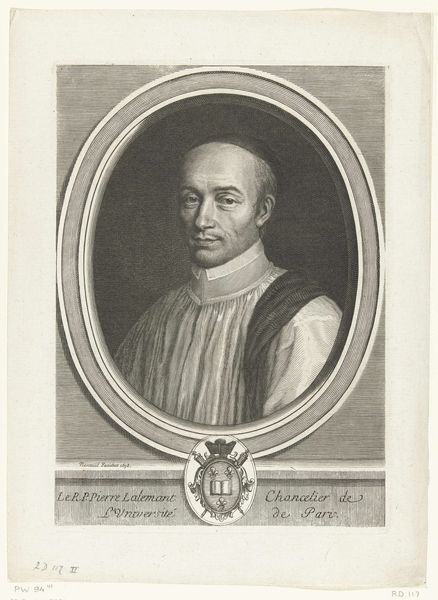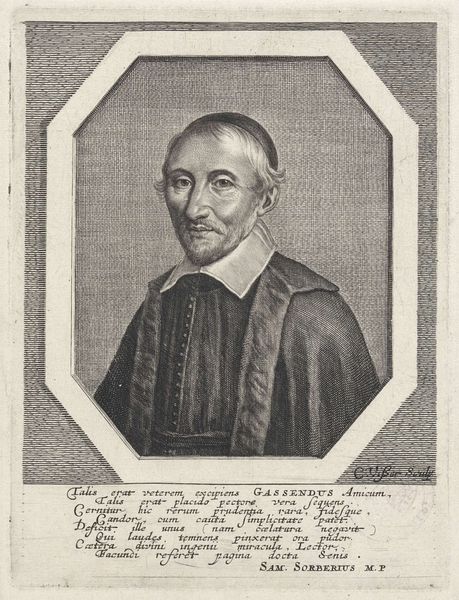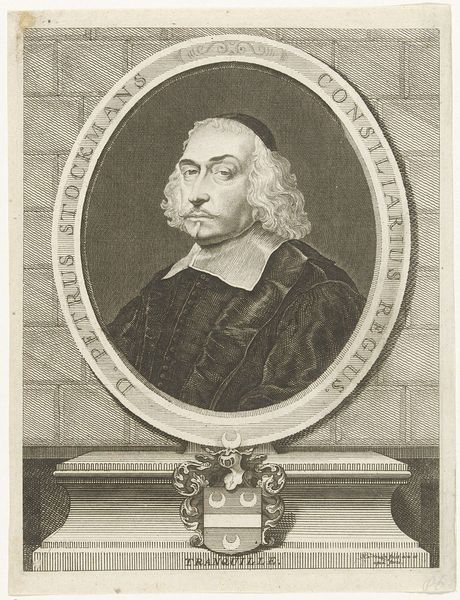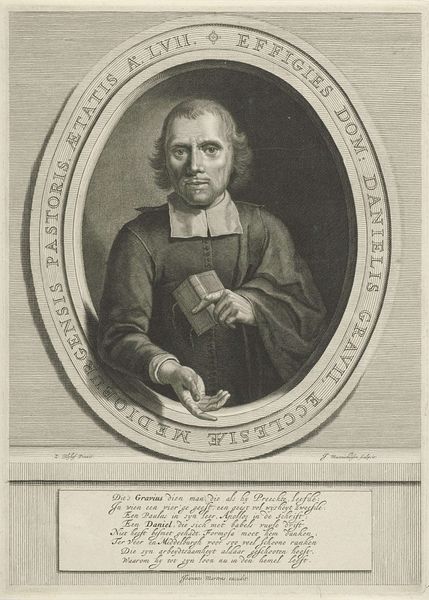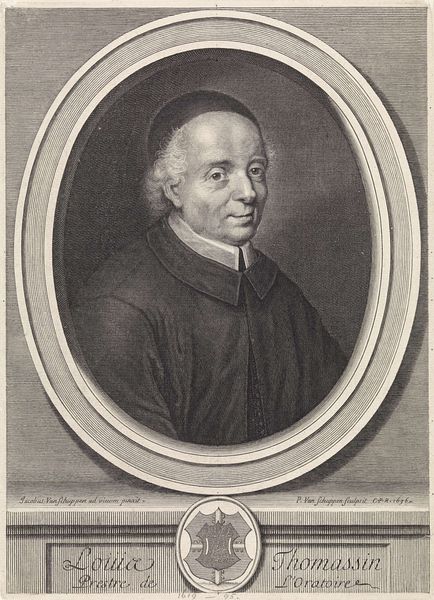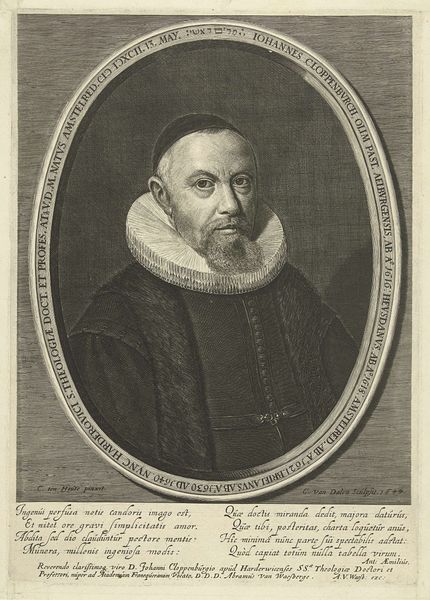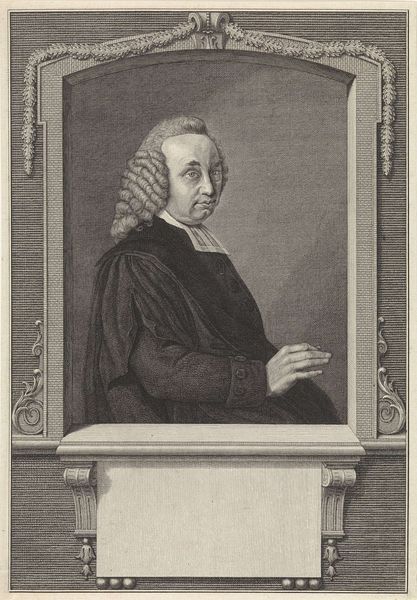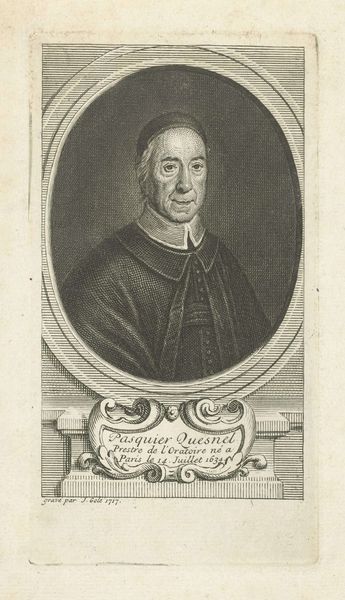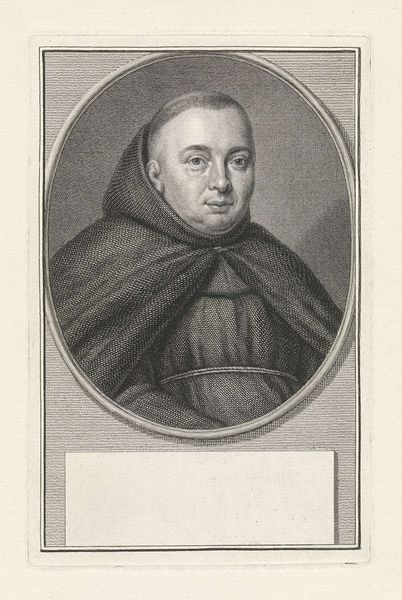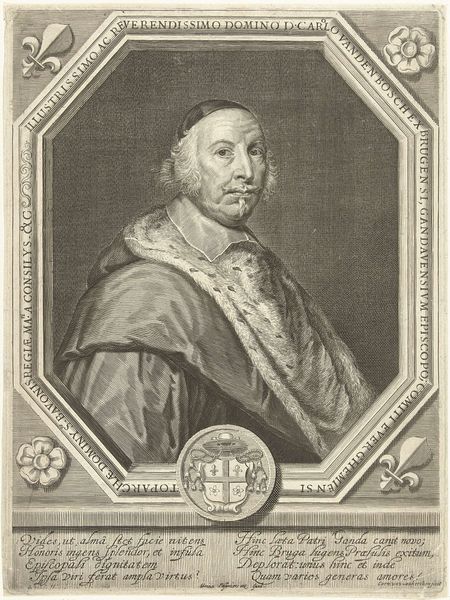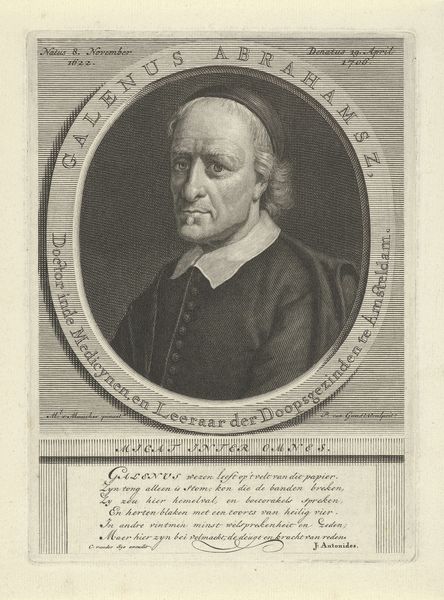
engraving
#
portrait
#
baroque
#
old engraving style
#
portrait reference
#
history-painting
#
engraving
Dimensions: height 146 mm, width 106 mm
Copyright: Rijks Museum: Open Domain
This is Gérard Edelinck’s portrait of Claude de Sainte-Marthe, created with engraving, a printmaking technique that demands precision. Engraving involves using a tool called a burin to carve lines directly into a metal plate, traditionally copper. The depth and spacing of these lines determine the tones and textures of the final image. The plate is then inked, and the surface wiped clean, leaving ink only in the incised lines. Pressed against paper, the image is transferred. Look closely, and you can discern the intricate network of lines that bring the portrait to life, from the delicate shading of the face to the details in the vestments. The skilled labor of the engraver was essential in disseminating images and ideas, making art more accessible in early modern Europe. While Edelinck was a celebrated printmaker, this portrait also speaks to the collaborative nature of printmaking, involving not just the artist but also the publisher and the network of distributors who brought the work to a wider audience. This challenges the romantic idea of the artist as a solitary genius, highlighting the social and economic context in which art is made and consumed.
Comments
No comments
Be the first to comment and join the conversation on the ultimate creative platform.
